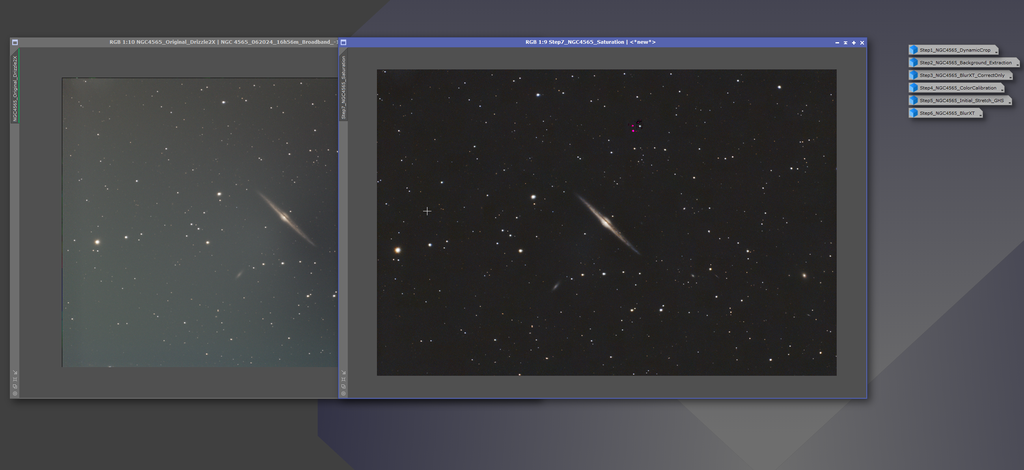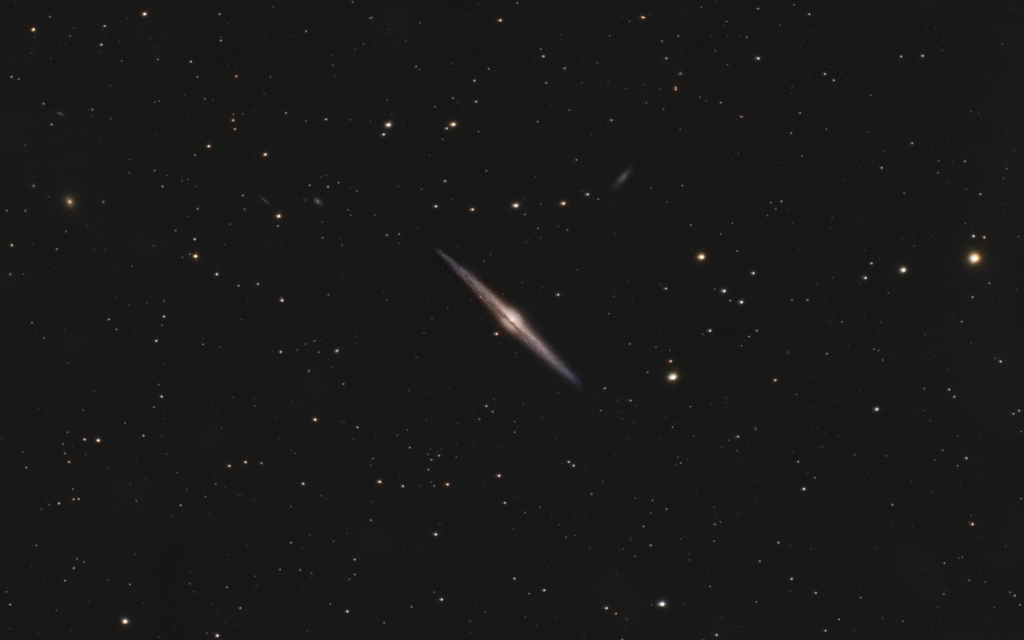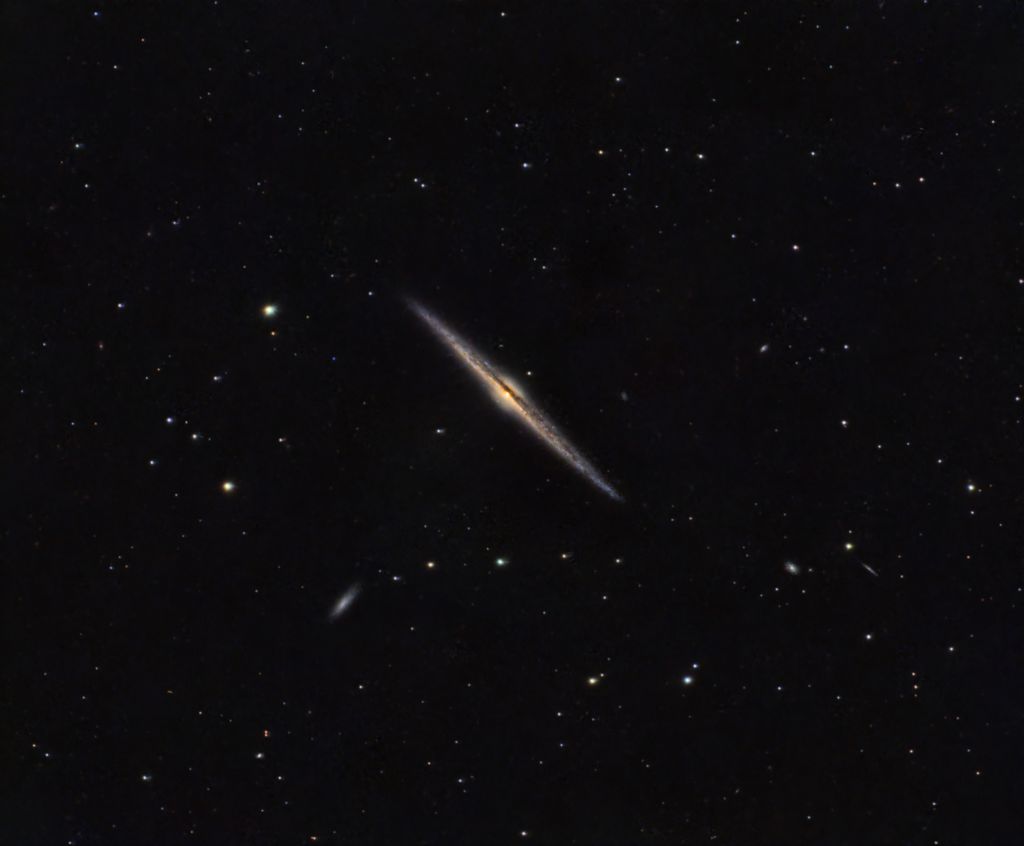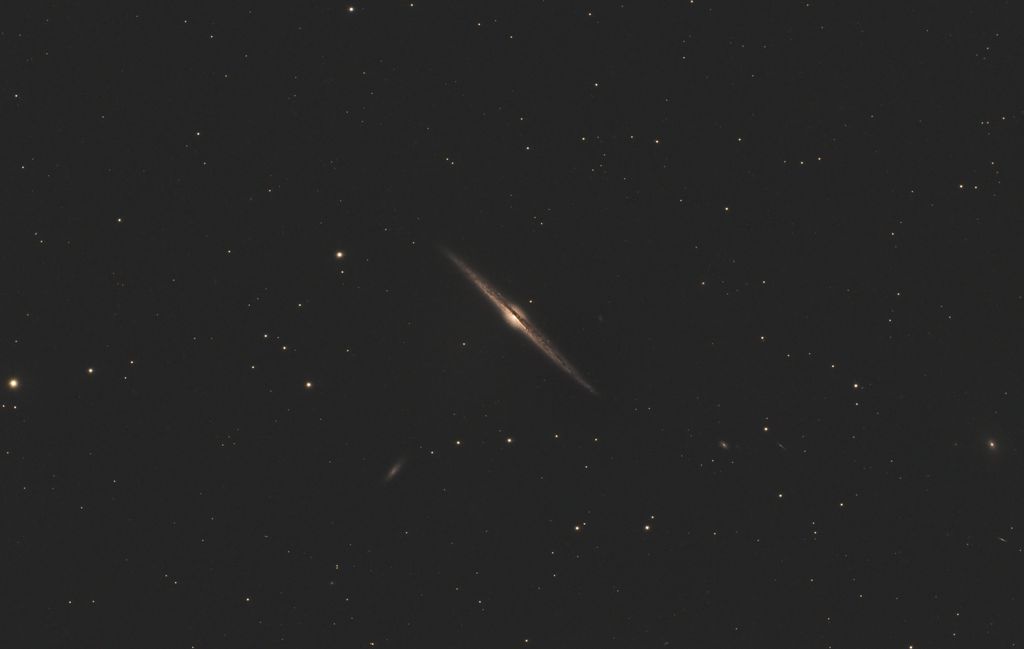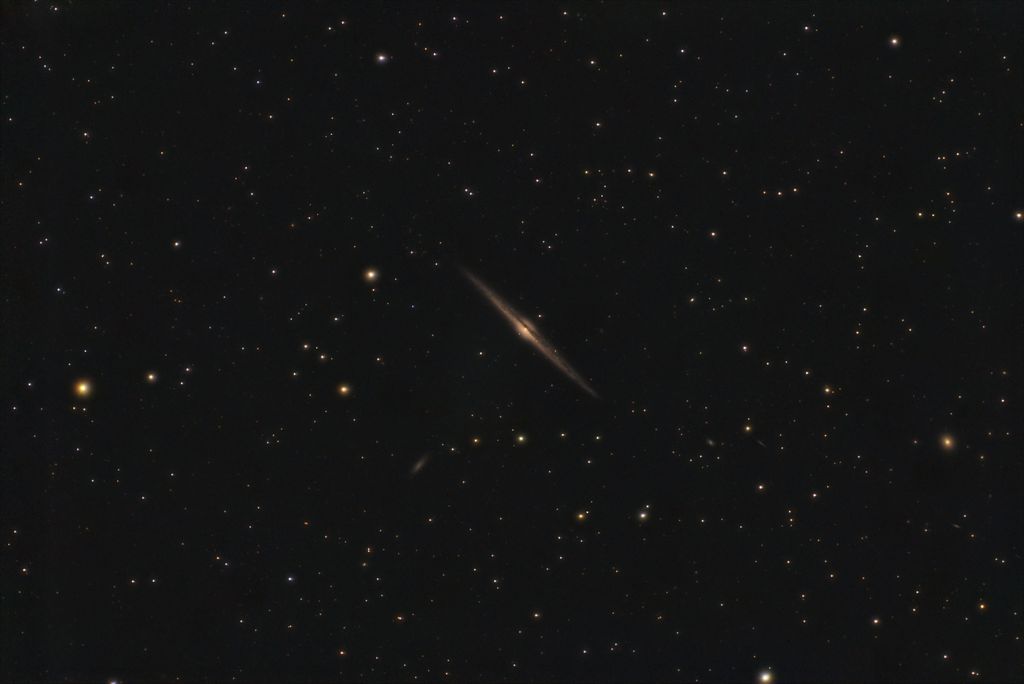
No crops, as can be seen by that vertical line to the left
I think you wanna merge all the versions together again, right?

so I think you can easily crop that out if you want
here's my steps:
1. Autostretch, to see what's immediately wrong with the image
2. There was gradients (tougher sharp ones actually), so I tried GradientCorrection, didn't help as much as I'd like, tried DBE, still not good, but helped, then I tried Graxpert, which helped the most with it's AI gradient removal.
3. Brought back into PI, tried SPCC, but it said something like "not enough data points" and didn't work, so I just accepted the colors as it was
4. Ran BXT at .92 with the nonstellar and .50 for the stars (image is still linear)
5. Ran Starnet
6. Applied Arcsinh stretch to the Stars, and a very slight curve stretch with curves transformation
7. Increased blue saturation about 100 percent, and reds/oranges by about 30 for the Stars
8. Applied ExponentialTransformation using SMI function with an order of 1.00, and a smoothing of 38, with the Lightness Mask box checked, to the stars. (this basically gives all the stars a small and faint halo)
9. Now I moved to Starless, applied Arcsinh stretch and Arcsinh black point increase, with a slight HistogramTransformation curve stretch.
10. Reduced orange saturation for the Starless, and increased blue saturation a bit (there was not much blue details I could bring out though; not sure how Markus did it)
11. Combined Starless and Stars: ---------------------- Stars + Starless - Stars * Starless --------------------- (which gives screening effect)
12. Now at the very end, I applied NXT: .60 for Denoise, 0 for Detail.
13. Sometime around step 11-12, I Solved the image using an image scale of 0.427"/px, and a pixel size of 2.4um, so I now used TypeCat script to detect the faintest galaxies and put that info in the Annotation which I did afterwards.
Annotation:
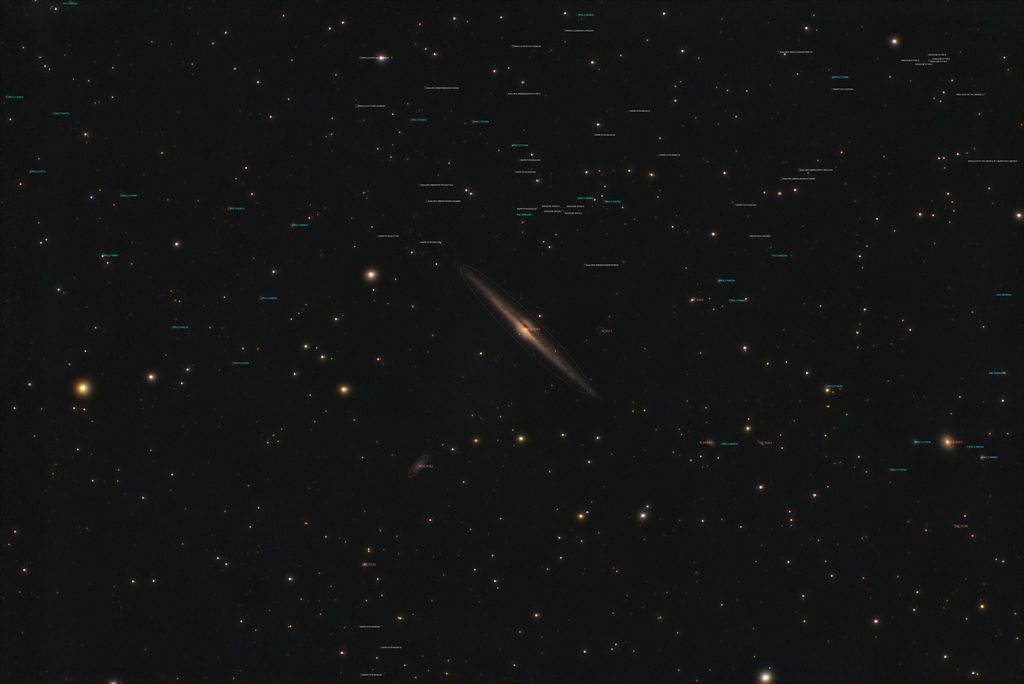
I can PM the full res TIFF if you, (the OP), wants.
